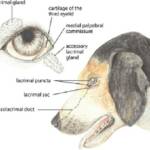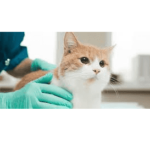Conjunctivitis is inflammation of the conjunctiva (the pink tissue) in the eye. The conjunctiva is a pinkish mucous-secreting membrane, similar to the lining of your mouth and nose, that covers the eyeball and lines the inner surface of the eyelids.
Inflammation anywhere is seen as red-ish, puffy tissue and is usually warm and painful and occurs to disease, allergy or injury. In conjunctivitis, the conjunctiva is inflamed, red and swollen.
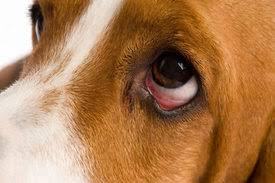
Dogs and cats with conjunctivitis normally have cloudy, yellow, or greenish discharge from the eyes; a lot of blinking or squinting; and redness and swelling around the eye. Green or yellow discharge often indicates a bacterial infection; clear, whitish or brown discharge in cats is more likely to be caused by allergies or a bit of debris in the eye.
Most often, with allergies, both eyes are affected, but not always. Sometimes other signs are seen, such as itching, hairlessness around the eye, discharge from the nose, sneezing, or coughing.
People are more familiar the term “pink eye.” In fact, this is a type of conjunctivitis in humans. The condition can be caused by several reasons, such as bacteria, herpes virus or allergies.
Any breed of dog or cat may develop allergic conjunctivitis. All breeds predisposed to allergies are also predisposed to allergic conjunctivitis. Allergic conjunctivitis is most common in young adults but can occur at any age.
In this allergic condition, the following are frequent contributors:
- Allergies
- Dust
- Food allergy
- House dust and mold
Treatment
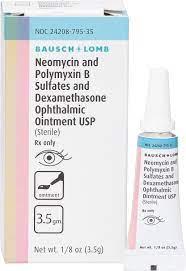
Allergic conjunctivitis is most commonly treated with eyedrops or ointments containing corticosteroids, such as dexamethasone or hydrocortisone. Your veterinarian may check first for a scratch on the cornea (called a corneal ulcer) by instilling a yellow-green dye called fluorescein.
If the eye has a scratch, medication without steroids is used, as steroids delay healing of the scratch. Oral corticosteroids and/or antihistamines may also be helpful, especially in those pets with associated skin disease.
If no scratch is present, your veterinarian may use an eye drop of only steroids or one mixed with antibiotics and a steroid. If needed, allergy medications may be recommended for your dog or cat companion, too.
A sterile saline eye wash can be used once or twice a day to clean the eyes and remove the accumulated discharge. Saline may also reduce surface irritation by flushing dirt, dust, debris, and pollens away from the eye.
Preventing damage to the eye is important as pets with allergic conjunctivitis may scratch at their eye with their paws or rub their face on furniture.
This rubbing can lead to a corneal ulcer and associated pain and damage to the eye. Using an Elizabethan collar (often known as the “cone”) to prevent scratching may be part of the treatment plan from your veterinarian.
This is especially important in short-faced breeds like pugs and shih-tzus, who are particularly prone to eye injuries. A recheck examination will likely be recommended to make sure the treatment is working and further injury to the eyes don’t occur.
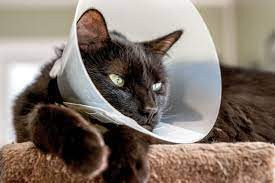
Prevention
Allergic conjunctivitis is caused by allergies, so the best way to prevent it from happening again is to remove whatever your pet is allergic to from your home, if possible. Often, it is difficult to identify and completely remove the trigger, especially if it is from the outside.
So, talking to your veterinarian about allergy medication may be warranted. Air filters in your home and frequent dusting may also be beneficial.
In many cases, allergic conjunctivitis can’t be cured, but with the help of your veterinarian (and perhaps a few steps taken around the house) it can be managed and you can make your pet more comfortable and keep their eyes healthy!

